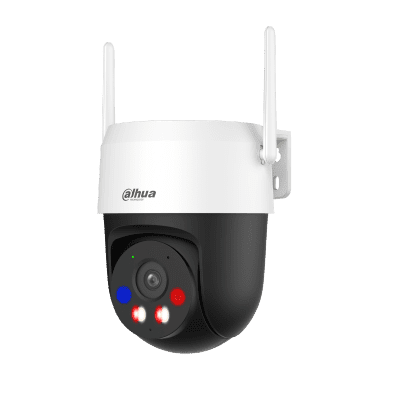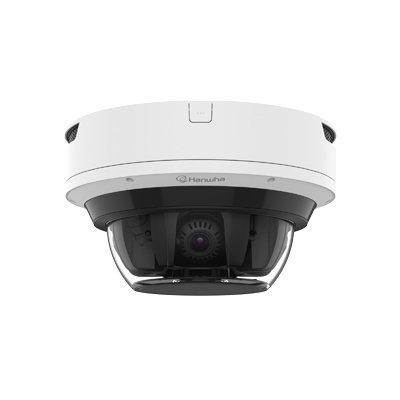What will be ‘the new normal’ for security?
Editor Introduction
Can we finally relax a little and announce that the pandemic is nearing an end? With all the false starts and stops, it’s understandable if uncertainty continues to be the dominant force. The apprehension that ruled at every stage continues even as the pandemic (hopefully) ends. But what about ‘the new normal?’ How will the industry need to reinvent itself in the post-pandemic world? We asked this week’s Expert Panel Roundtable: As the industry transitions back to in-person meetings, what will be the ‘new normal?’
While a fully remote workforce is unlikely to remain the norm, we are already seeing an evolution towards a hybrid work model for many businesses, whereby employees come to the office to do collaborative work, but traditional in-office hours may be reduced. As organisations start to facilitate more in-person gatherings, they will need a comprehensive security strategy. One of the many requirements created by the pandemic that is likely to remain, is the need to know who is entering and leaving a facility and how many people are in a building at any given time. By maximising the use of their Video Management and Access Control systems already deployed, organisations can generate multiple integrated solutions such as real-time video analytics data, access/occupancy management dashboards and visitor/identity management logs that can be used to standardise, digitise, and automate SOPs. Other benefits include operational efficiency and better use of office space.
While employees are slowly transitioning back into the physical workplace, most companies will not have the same 9-5, five days a week in the office that they had pre-pandemic. Hybrid working makes security more complicated, as working patterns are harder to predict, so anomalous behavior is harder to spot. However, technology can help organisations to adjust to the ‘new normal.’ For example, sensors paired with video security can be used to track desk occupancy – which will help organisations understand when and how many employees are coming into the office, facility usage fluctuations, and, therefore, assist with realistic desk planning over time. Companies will also have to be sensitive to new employee expectations around cleanliness and health in the office which, again, can be monitored with sensor technology. Desk cleaning, air quality, and even pipe monitoring can all be tracked to reassure employees that they are safe while in the workplace.
We heard the phrase ‘new normal’ a lot as we found ourselves deeper in the throes of the pandemic. While the industry slowly transitions back to in-person meetings, it will likely never be the same. I see the enhancement of touchless and contactless technologies remaining prevalent in the security industry as we have put more emphasis on health safety and practices. Solutions that minimise high contact entry and access points will continue to be vital security tools in the future. The ‘new normal’ will be less of traditional access control solutions such as physical badges and call buttons, and more technologies like touchless video intercoms.
Worldwide, employees are preparing to come back to the office to reconnect with colleagues. True, the pandemic has changed the way to work, and we anticipate many companies implementing a hybrid working model to allow for greater flexibility and productivity. However, we also know that the risk of infection is still present and the potential for further variants means that we may need to retain some best practices behaviours like social distancing. Because of this, previously niche solutions, such as touchless access control or computer vision (to check masks or occupancy rate), are now ‘everyday’ and will continue to be used by businesses to keep employees safe and worry-free. This year, we expect that the ‘new normal’ will require businesses to continue to manage security differently. Businesses will now look to their service providers for a more collaborative approach to help them build a safer, smarter, and healthier working environment.
I believe the biggest difference in the ‘new normal,’ will stem from the change in people’s perspective. People are looking more closely at what is being done to keep us safe; there will be a new level of accountability. According to a recent study by Honeywell, 68% of employees are scared to return to the office, 43% believe the biggest safety risk is shared devices, and 42% believe that management will not enforce requirements. To in-person meetings, this will impact the criteria used to determine where their event will be hosted. Decision-making will now include what is being done to keep people safe. No longer will a checklist and a promise be good enough to win the business, customers and employees will demand timely accurate data. The challenge for those operations that still largely rely on pen and paper, will be finding the data; is it current, and believable?
As we come out of the pandemic, the ‘new normal’ is something that will continue to change every year. It's apparent that there will be a heavy emphasis on tech-driven solutions over the next few years as many organisations return to the office and many choose to stay remote. Currently, we are seeing much emphasis on hybrid work models where employees attend in-person at times and at other times work remotely. With the significant demand for remote options, there will be a big increase in Security as a Service {SaaS) solutions across the industry. Organisations are looking for hybrid and remote solutions for their employees and their security, including solutions like remote video surveillance and monitoring.
Editor Summary
A successful and well-attended ISC West convention this March exemplifies the industry’s emergence into a post-pandemic ‘new normal’ where in-person meetings have resumed. Pondering what is different for the security industry after the pandemic, our Expert Panelists point to several factors, including changing (‘hybrid’) work schedules, more touchless technologies, and a need for more collaboration and a safer, smarter work environment.
- Related links
- ISC West 2022
- Ava CCTV software
- Axis Communications Access control controllers
- Axis Communications CCTV software
- Axis Communications Access control software
- Genetec Access control software
- Genetec Access control controllers
- Genetec CCTV software
- Hikvision CCTV software
- Hikvision Access control software
- Hikvision Access control controllers
- Hikvision CCTV monitors
- Biometric Access control software
- ANPR Software CCTV software
- Standalone Access control controllers
- LED CCTV monitors
- TFT LCD CCTV monitors
- Broadcast Messenger Access control software
- Mifare Access control software
- Proximity Access control software
- IP Surveillance Software CCTV software
- Carpool Anti-passback Access control software
- Smart Card Access control software
- Central Monitoring Option Access control software
- Monitoring Software CCTV software
- Transmission Software CCTV software
- Door Monitoring Option Access control software
- Guard tool module Access control software
- ID Badging Software License Access control software
- License Access control software
- Management Systems Upgrade Access control software
- NStar software upgrade Access control software
- Redundant System Software Access control software
- Server software for MSDE Access control software
- Version Upgrade Access control software
- Related categories
- CCTV software
- Access control controllers
- Access control software
- CCTV monitors
Expert commentary
A modern guide to data loss prevention
DownloadThe truth behind 9 mobile access myths
Download7 proven solutions for law enforcement key control and asset management
DownloadAccess control system planning phase 2
DownloadSecurity practices for hotels
DownloadDahua P3AS-PV 3MP Outdoor Wi-Fi PTZ Camera with Active Defense
Climax Mobile Lite: Advanced Personal Emergency Response System (PERS)
Hanwha Vision 4CH AI Multi-sensor Camera with WAVE VMS





















